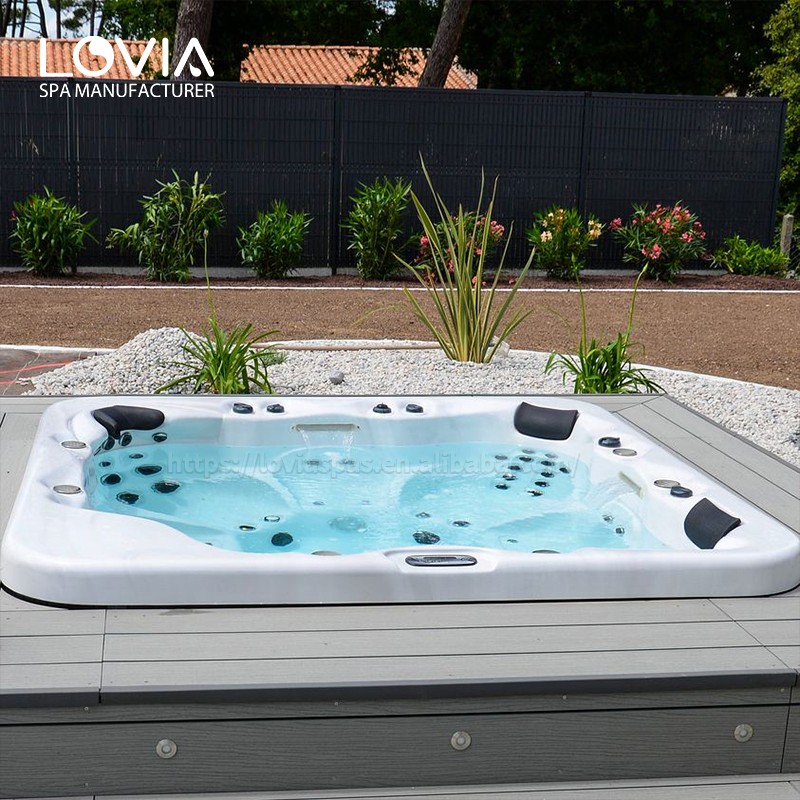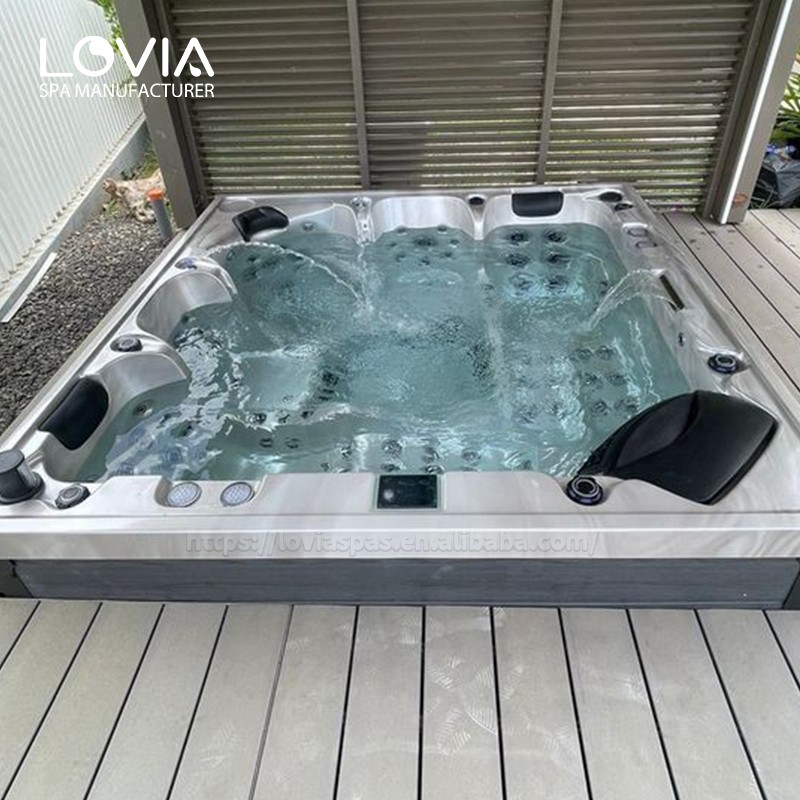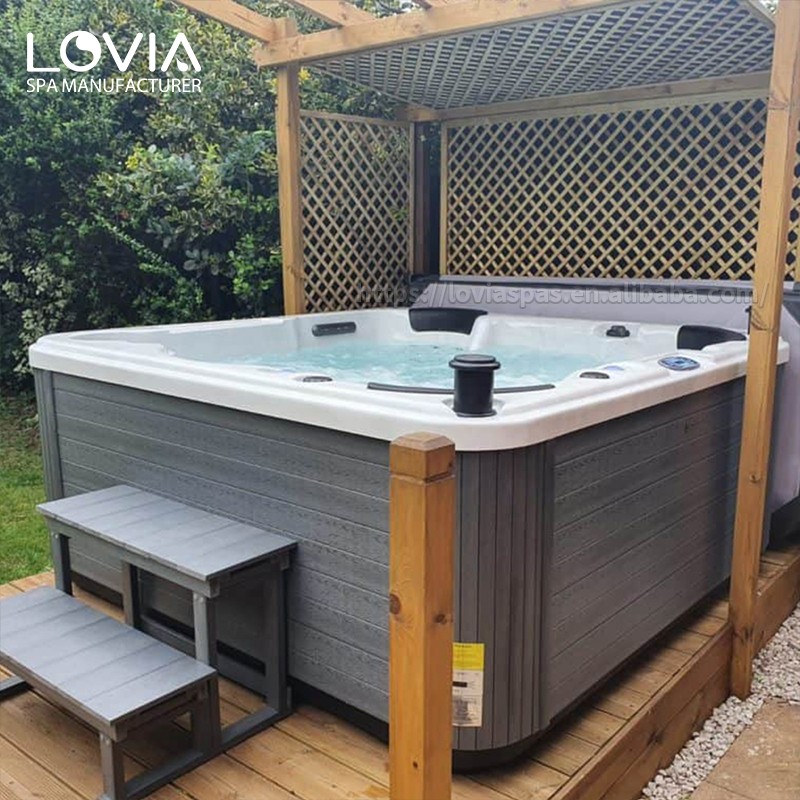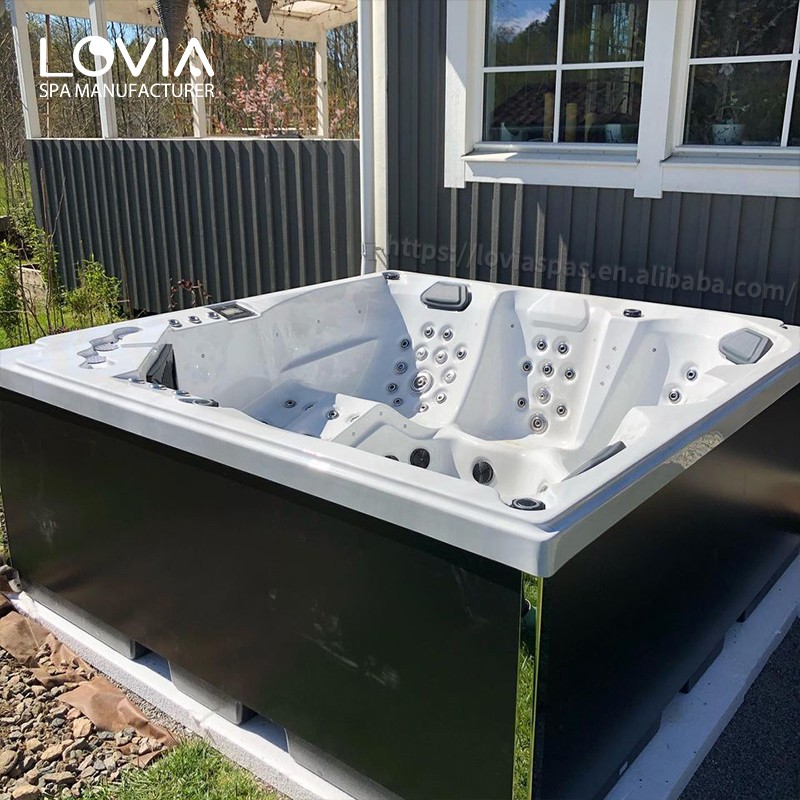
Do I have to drain the hot tub when I replace the heater?
2025-02-22 15:50In the process of using an outdoor hot tub, the normal operation of the heater is the key to ensuring a constant water temperature and providing a comfortable experience. However, any equipment will age over time and with the increase in frequency of use, and the heater is no exception. When the heater has problems or fails, replacing it with a new one is a necessary maintenance step. However, in the process of replacing the heater, many users will ask an important question: Do I have to drain the outdoor hot tub when I replace the heater?
This question seems simple, but the actual situation involves multiple technical aspects and safety factors. To help users better understand this issue, this article will explore in depth whether the hot water tub must be drained when replacing the heater from multiple perspectives such as technology, operation, safety and cost.

How and where does a hot tub heater work
First, understanding how a hot tub heater works and where it fits into the overall tub system is critical to answering this question.
The heater of an outdoor hot tub is usually located at the bottom or side of the hot bathtub and is connected to the water pump and filtration system. When the water pump is started, the water passes through the heating element inside the heater, is heated to a predetermined temperature, and then returns to the hot tub for circulation. The heater itself is a relatively sealed component that is connected to the water circulation system of the hot tub through pipes.
Since the heater is directly involved in the heating and circulation of water, it inevitably involves the water in the hot tub when replacing the heater. The replacement operation of the heater requires disconnecting the water pump and the pipe system, which usually means that the water needs to be drained to prevent water from overflowing or leaking during the operation.
What are the reasons for draining the water when replacing the heater?
Reasons for draining the water when replacing the hot tub heater:
1. Prevent water overflow
2. Protect the electrical system
3. Replace the heater requires a complete dry environment
4. Check and clean the opportunity
Prevent water overflow
When replacing the hot tub heater, the technician needs to disconnect the pipes and wires connected to the heater. If the hot water tub is still full of water, water will flow out through open pipes or other connections, causing unnecessary overflow. This will not only cause trouble in cleaning, but also may cause hot water tub damage or circuit short circuit risks.
Especially without proper drainage measures, water overflow can spread rapidly, affecting surrounding facilities and even endangering the safety of electrical components. Therefore, draining the hot bathtub is often an unavoidable step to avoid additional problems caused by overflowing water.
Protecting the electrical system
The hot tub heater is directly connected to the electrical system, and the combination of electricity and water is very dangerous. If the heater is not powered off or the power is not completely cut off during the replacement operation, the heater may still be energized, which will greatly increase the risk of electric shock accidents.
In addition, if the water in the outdoor hot tub comes into contact with exposed wires or heater elements, it may cause a short circuit or other electrical failure. Therefore, draining the hot tub not only reduces the possibility of water contacting electrical components, but also ensures the safety of the operating environment during the replacement process.
Complete dry environment is required for heater replacement
The hot water tub heater is a complex device that requires precise operation and installation during replacement. If there is water left during the replacement process, it may affect the technician's operation. For example, when connecting the new heater to the water pump and pipes, if water flows out of the pipes, it may cause an unstable connection or a poor seal.
In addition, many heater parts require a dry environment to be properly installed and fixed. Therefore, in order to ensure a smooth installation process for the heater, it is usually recommended to drain the water in the hot tub and create a dry operating environment.
Inspection and Cleaning Opportunity
Draining your hot water tub when replacing a heater also provides an opportunity to inspect and clean the entire system. Over time, the water quality of a outdoor hot tub can be affected by minerals, scale, and other contaminants that can build up in the heater, pipes, and filtration system.
Draining the hot bathtub when replacing a heater allows the user or technician to thoroughly clean the interior of the hot tub to remove scale and other deposits that could damage the new heater. This not only prolongs the life of the new heater, but also improves the overall performance of the hot water tub.

What are some potential problems with not draining the tub when replacing a heater?
While some users may want to replace a heater without draining the hot tub to save time and water, doing so can actually lead to a host of problems. Here are some of the potential risks of not draining the tub when replacing a heater:
Leakage Problems
If you don't drain the hot tub water, there will still be a lot of water left in the pipes, and it is likely that this water will overflow through the pipe openings when the heater is removed. Even if the technician attempts to temporarily seal the pipes with clamps or other methods, leaks cannot be completely eliminated. Even a small amount of water leaking out can cause damage to the equipment and electrical system, and even affect operational safety.
Electrical Safety Risks
As mentioned earlier, the combination of water and electricity is extremely dangerous. If there is still water in the hot bathtub when the heater is replaced, any water that comes into contact with the electrical system could cause a short circuit or worse, an electric shock. Therefore, from a safety perspective, draining the hot tub is a necessary step to ensure the safety of the electrical system when replacing the heater.
Increased Operational Complexity
The technical difficulty of replacing the hot tub heater without draining the water is greatly increased. Not only do technicians have to worry about how to avoid water overflow, but they also have to deal with the problem of connecting the equipment in a humid environment. Any moisture that comes into contact with the heater's connection will increase the difficulty of installation and may cause poor sealing or unstable equipment operation.
Equipment Damage Risk
The installation of a new heater requires precise operation and good environmental conditions. If the water is not drained, water may enter the heater or other sensitive components during the replacement process, causing the new equipment to not work properly after installation or to be damaged prematurely. Therefore, it is particularly important to drain the hot bathtub water to protect the new heater from unnecessary damage.

What are the benefits of draining the hot bathtub?
Benefits of draining the hot water tub:
1. Ensure safe operation
2. Inspection and maintenance opportunities
3. Improve replacement efficiency
4. Prevent water quality issues
Ensure safe operation
First and foremost, draining the hot bathtub ensures a safe operating environment when replacing the heater. Whether it is to prevent water overflow or avoid electrical system failure, draining the water can effectively reduce potential safety hazards and ensure the smooth operation of the entire operation process.
Inspection and maintenance opportunities
Draining the outdoor hot bathtub also provides an opportunity to inspect and maintain other parts of the hot bathtub. Technicians can take this opportunity to check the operation of the pump, filter and plumbing system, and remove scale and sediment that may have accumulated. This not only helps to extend the overall life of the outdoor hot tub, but also ensures that the equipment can operate in optimal condition after the heater is replaced.
Improve replacement efficiency
By performing the heater replacement operation in a dry environment, technicians can operate and install the new equipment more accurately, ensuring the firmness and sealing of the joints. This helps to reduce the risk of leaks or equipment failures later, thereby improving the efficiency of the replacement.
Prevent water quality issues
Draining the hot bathtub can also prevent water quality issues from occurring. If you do not drain the water when you replace the heater, the water in the hot bathtub may have become contaminated or may have accumulated excessive minerals and impurities that may harm the new heater. By draining the water and refilling with clean water after the replacement, you ensure good water quality, thus extending the life of the unit.

Looking for affordable and high-quality outdoor spas? Guangzhou HuanTong Industrial offers a comprehensive range of spa solutions, including outdoor hot tubs, acrylic spas, and swim spas, all manufactured to meet global safety and performance standards. Since our establishment in 1989, we have been providing reliable, customizable products at wholesale prices. Our factory production capacity exceeds 1200 units per month, ensuring quick fulfillment of large orders. Certified by CE, ETL, and ISO9001, our products guarantee superior performance. Contact us today to inquire about bulk purchase discounts and special offers.
